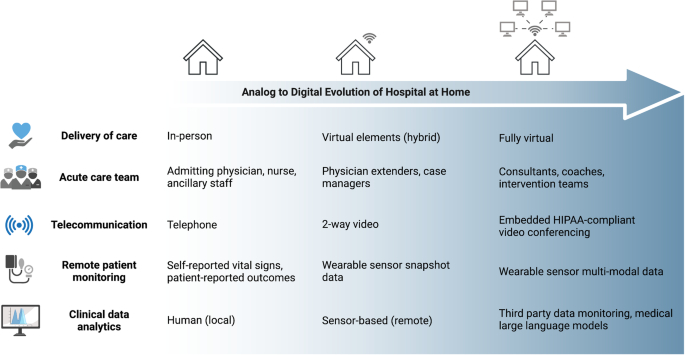
@ShahidNShah


The Hospital at Home (HaH) model, offering acute-level hospital care in patients' homes, has gained traction in the US due to rising healthcare costs and the COVID-19 pandemic. Despite initial success and technological advancements in remote monitoring and health information technology, widespread adoption faces hurdles. Evaluating peer-reviewed evidence reveals HaH's potential to reduce costs and improve outcomes. Challenges, including reimbursement issues, must be addressed for sustained implementation. As the Centers for Medicare and Medicaid Services' waiver facilitating HaH programs nears expiration, it's imperative to assess HaH's viability as a permanent acute care alternative, leveraging digital innovations and rigorous evaluation.
The Hospital at Home (HaH) model, providing acute-level care at patients' homes, has gained momentum in the US amid escalating healthcare costs and the COVID-19 pandemic. Technological advancements in remote monitoring and health information systems have facilitated its growth. Despite initial success, widespread adoption faces obstacles, including reimbursement challenges. Evaluating peer-reviewed evidence underscores HaH's potential to reduce costs and enhance outcomes. However, as the Centers for Medicare and Medicaid Services' waiver supporting HaH programs approaches expiration, addressing hurdles such as reimbursement is crucial. Rigorous assessment of HaH's viability as a permanent acute care alternative is imperative, leveraging digital innovations and evidence-based evaluation.
Continue reading at nature.com
Remote Patient Monitoring (RPM) is revolutionizing healthcare by leveraging digital solutions to remotely collect and share vital patient health data. This approach reduces hospital visits, …
Connecting innovation decision makers to authoritative information, institutions, people and insights.
Medigy accurately delivers healthcare and technology information, news and insight from around the world.
Medigy surfaces the world's best crowdsourced health tech offerings with social interactions and peer reviews.
© 2025 Netspective Foundation, Inc. All Rights Reserved.
Built on Dec 17, 2025 at 12:37pm